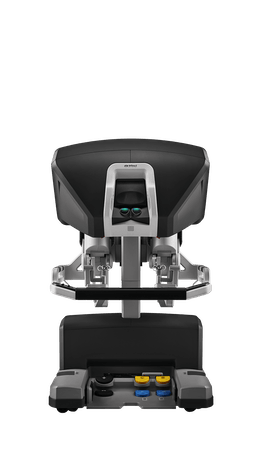Robotic surgery involves advanced technology that has been in use for about 20 years. It was originally developed in partnership with the US Department of Defense (DARPA), and has improved rapidly even in that sort span of time. During the procedure, a surgeon inserts a robotic camera and robotic instruments into your belly through incisions smaller than half an inch. The surgeon then controls these instruments using a console that provides magnified 3D vision inside the belly, independent controls for the left and right hands, as well as several foot pedals. The robotic instruments provide the surgeon with an extra arm if needed, and they are more stable than the human hand. They allow the surgeon very fine motor control and excellent vision. Using both hands and both feet, your surgeon controls the instruments to carry out the operation.
Typically the smaller incisions and very fine dissection mean less pain for the patient and a faster recovery.
This type of surgery requires general anesthesia. After you go to sleep, your belly is inflated with CO2 gas to create space to work. The robotic instruments are inserted into your belly and the operation is performed. At the conclusion of the operation, the instruments are removed, and as much CO2 as is possible is evacuated. The incisions are closed and you go to the recovery room. Some people experience shoulder pain after the procedure, this is caused by residual CO2 gas and goes away within 72 hours as the gas is reabsorbed by your body.

This is the robot that is placed next to the operating table. After you are asleep, the robotic arms are maneuvered into place over the operating table. The arms hold the camera and the instruments that enter your belly through incisions smaller than half an inch. The instruments are remote controlled by your surgeon.

This is the control console where the surgeon sits. The surgeon controls the robot using hand grips for each hand and several foot pedals. The control console typically sits in the corner of the Operating Room, a few feet away from the patient.

The surgeon’s view from the console. This provides 3D vision and magnification inside your body.

The tower is also near the patient. It holds some of the computer equipment and provides a screen so the Operating Room staff can see what is happening and assist the surgeon accordingly.
